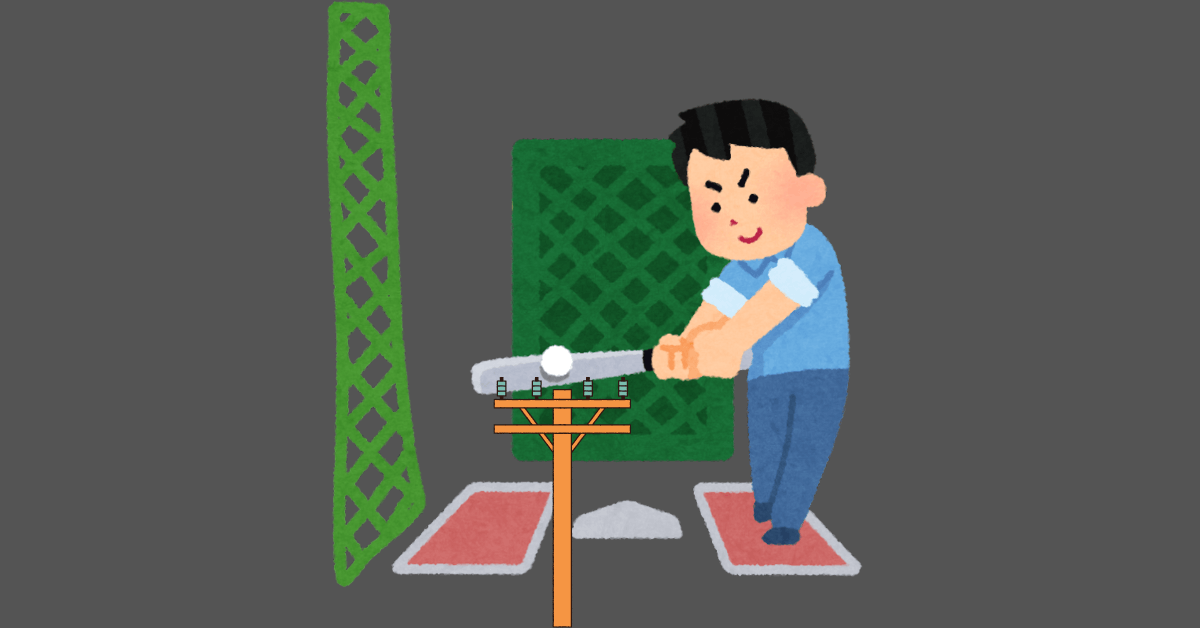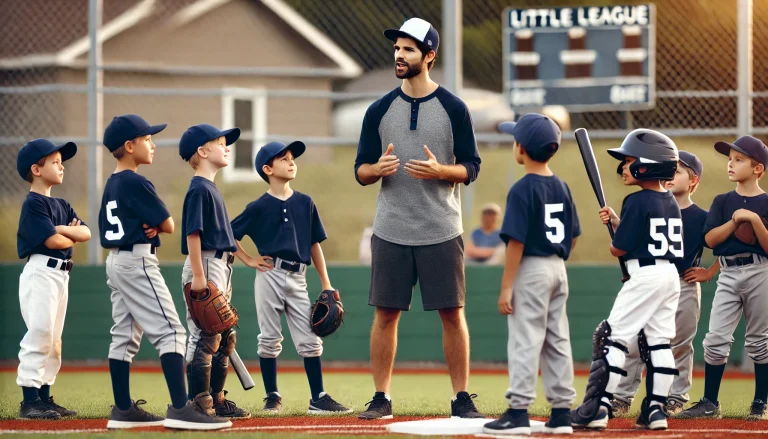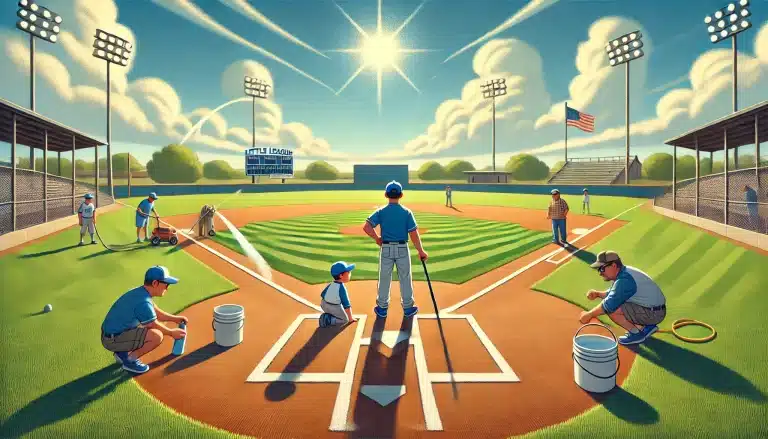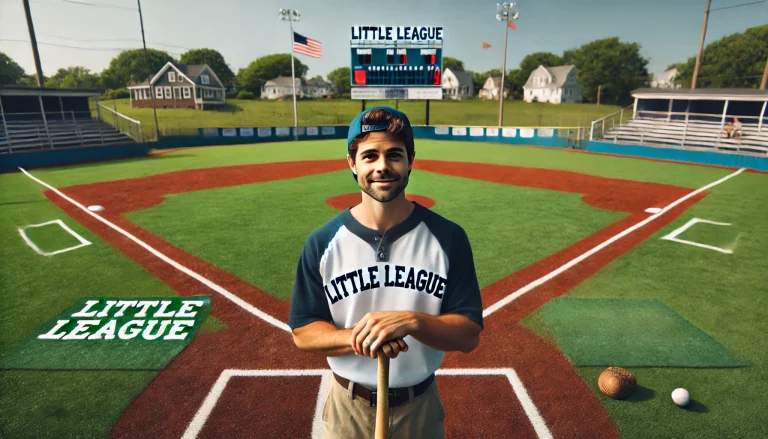Off-Season Baseball Training Guide
Introduction
Baseball might take a pause during winter, but the path to player improvement continues!
The off-season allows young Little Leaguers to build skills, boost conditioning, and gear up for spring—free from game-day pressure.
Practical off-season training goes beyond endless drills or year-round intensity. It’s about focusing on these critical areas:
- Batting, throwing, and fielding
- Building up strength and stamina
- Sharpening baseball IQ
- Take care of equipment
- Team connections over the winter
For players aged 8–12, these years are ideal for improving their skills.
However, finding the right balance between improvement and recovery is crucial. This guide will give coaches and parents the strategies to:
- Keep kids engaged and motivated
- Develop fundamental skills
- Confidently prepare for the spring season
Essential Off-Season Conditioning
Building age-appropriate strength and endurance during the off-season helps prevent injuries while improving on-field performance.
However, young athletes require special consideration to ensure safe, effective conditioning that supports long-term development.
Cardiovascular Development
Start with basic endurance exercises that mirror baseball movements:
- Sprint-jog intervals that simulate base running (30-second bursts)
- Lateral movement drills using agility ladders
- Modified shuttle runs focusing on direction changes
- Quick-feet drills that enhance first-step quickness
- Light jogging sessions (no more than 15-20 minutes)
Dynamic Stretching Program
Begin every workout with baseball-specific mobility work:
- Arm circles and shoulder rotations
- Controlled leg swings (forward/back, side-to-side)
- Walking lunges with trunk rotation
- High knees and butt kicks
- Hip flexor stretches and mobility work
- Core rotation exercises
Core Strengthening Basics
- Modified planks (start with 15-20 seconds)
- Basic bridge exercises
- Superman holds for back strength
Balance and Coordination Work
Enhance athletic movement with these fundamentals:
- Single-leg stance exercises
- Controlled lateral bounds
- Simple agility ladder patterns
- Coordination drills with tennis balls
Off-Season Baseball Training Guide
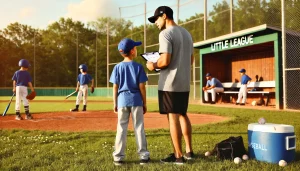
General Safety Guidelines for Off-Season Training
- Limit sessions to 30-45 minutes
- Always include proper warm-up and cool-down periods
- Monitor fatigue levels closely
- 48 hours of rest between conditioning sessions
- Adjust intensity based on age and skill level
- Focus on proper form over repetitions
- Keep water readily available
Remember: Young athletes’ conditioning programs should focus on building fundamental skills and general athleticism rather than sport-specific intensity. Proper form and technique should always prioritize speed or repetitions.
Key Tips for Coaches
- Start simple and progress gradually.
- Group players by ability.
- Demonstrate exercises clearly.
- Monitor form and fatigue.
- Make it fun with game-based activities.
- Avoid competition in conditioning.
- Communicate with parents about home practice.
Remember: Young athletes aren’t mini-adults. Focus on building general athleticism and movement skills with proper technique, not sport-specific intensity.
Off-Season Baseball Training Guide
Indoor Skill Development
When winter weather drives baseball indoors, players can focus on fundamentals without the pressures of competition. The controlled environment is ideal for refining mechanics and building consistency.
Batting Cage Work
Refine batting mechanics through structured drills:
- Tee work focuses on stride and weight transfer.
- Soft-toss drills for timing and contact.
- Slow-motion swings to fine-tune front-side mechanics.
- Location-specific contact drills.
- Two-hand finish and follow-through practice.
Soft-Toss Training
Build hand-eye coordination with varied toss drills:
- Front-angle tosses for timing.
- Side-angle tosses for inside/outside pitches.
- Variable-speed tosses for reaction improvement.
- Short-distance reaction drills.
- Two-ball recognition exercises.
Wall Ball Fundamentals
Master fielding mechanics with wall drills:
- Backhand fielding angles.
- Glove-side technique.
- Fielding position fundamentals.
- Quick transfers for double plays.
Footwork Development
Improve defensive agility and movement:
- First-step quickness drills.
- Lateral patterns and crossover steps.
- Ready position to fielding transition.
- Double-play pivot practice.
Mirror Drill Pitching
Use visual feedback to perfect pitching mechanics:
- Check balance points.
- Focus on front-side mechanics.
- Practice follow-through.
Video Analysis
Incorporate technology for better insights:
- Record swings from multiple angles.
- Analyze pitching mechanics.
- Break down fielding techniques..
- Track progress over time.
Practice Structure Tips
- Limit sessions to 60-90 minutes.
- Rotate stations every 15-20 minutes.
- Include water breaks.
- Prioritize quality over quantity.
- Wrap up with light conditioning.
Takeaway: Indoor training is a golden opportunity to break down mechanics, build muscle memory, and hone skills without game-day stress.
Nutrition and Health Guidelines
Supporting young athletes with proper nutrition and healthy habits during the off-season is essential for maintaining energy, fostering growth, and preparing for spring training.
Focus on building sustainable, balanced practices rather than intricate diet plans.

Basic Nutrition Principles
Help young players form healthy habits:
- Start every day with a nutritious breakfast.
- Include a source of protein in every meal.
- Prioritize colorful fruits and vegetables.
- Stay hydrated consistently.
- Choose healthy snacks for practices or games.
- Minimize sugary drinks and processed foods.
Pre-Practice Fueling
Optimize energy levels with well-timed meals:
- Eat a light meal 2–3 hours before practice.
- Snack 30–60 minutes prior, focusing on complex carbs.
- Incorporate lean proteins and avoid heavy, greasy foods.
- Drink water before activity to ensure hydration.
Post-Practice Recovery And Hydration Habits
- Rehydrate thoroughly, replacing fluids lost during activity.
- Pair proteins with carbohydrates to replenish energy.
- Opt for whole foods or convenient recovery snacks.
- Sip water throughout the day.
- Aim for light yellow urine as a hydration indicator.
- Increase fluid intake during training.
- Carry a water bottle to all activities.
- Avoid caffeine or energy drinks.
Sleep and Recovery
Promote rest for peak performance:
- Stick to a consistent bedtime routine.
- Aim for 9–11 hours of sleep nightly.
- Create a quiet, dark sleep environment.
- Reduce screen time before bed.
- Incorporate rest days into weekly routines.
Healthy Snack Ideas
Quick, energizing snack options:
- Apple or banana with almond butter.
- Greek yogurt with granola and fruit.
- Trail mix (nuts, dried fruits, seeds).
- Veggies with hummus.
- Cheese sticks and whole-grain crackers.
- Hard-boiled eggs.
Parent Tips
Support your athlete’s nutrition journey:
- Plan meals around training schedules.
- Pack portable, healthy snacks.
- Encourage consistent hydration.
- Model balanced eating habits.
- Avoid using food as a reward.
Remember: The goal is to establish healthy, lifelong habits that support growth and athletic development—not restrictive diets or overly complex plans.

Equipment Care and Maintenance
Keeping equipment in top condition during the off-season ensures readiness and safety when spring training begins. Regular maintenance also extends the gear’s life.
Glove Maintenance
Preserve leather quality and structure:
- Wipe off dirt after each use.
- Condition leather monthly to prevent cracking.
- Store with a ball in the pocket to maintain shape.
- Tighten or replace loose laces as needed.
- Keep gloves in a cool, dry place away from heat.
Bat Care
Extend bat performance:
- Inspect for cracks, dents, or signs of wear.
- Clean grips and barrels regularly.
- Store bats horizontally in a room-temperature area.
- Avoid exposure to extreme heat or cold.
Helmet Safety
Ensure proper head protection:
- Check helmets for cracks or other damage.
- Clean interior padding after use.
- Verify the fit and stability of chinstraps and faceguards.
- Replace helmets that no longer fit growing players.
Catcher’s Gear
Maintain safety and comfort:
- Inspect straps, buckles, and padding for wear.
- Clean chest protectors and shin guards.
- Look for rust on metal components.
- Store gear in a ventilated area to prevent odor and damage.
Baseball Storage
Keep balls in good condition:
- Store baseballs in a dry, climate-controlled space.
- Rotate practice balls to avoid overuse.
- Inspect for cuts or damaged covers.
Storage Tips
Organize gear efficiently:
- Use breathable equipment bags.
- Avoid damp or concrete storage areas.
- Ensure proper ventilation to prevent mold or odors.
- Label personal items to avoid mix-ups.
Spring Preparation
Be ready for the new season:
- Inventory all equipment.
- Confirm that the gear fits correctly after growth spurts.
- Replace damaged or worn-out items.
- Clean all equipment thoroughly.
Remember: Well-maintained equipment improves performance and helps prevent injuries. Prioritize regular checks to ensure everything is in safe, game-ready condition.
Spring Season Preparation
A successful spring season starts with careful planning and gradual preparation during the off-season’s final weeks. This transition ensures players are physically ready and mentally excited for the upcoming season.
Gradual Return Protocol
Increase activity intensity step by step:
- Week-by-week progression for throwing programs.
- Gradual reintroduction of batting practice.
- Incrementally more intense fielding drills.
- Transition to game-speed exercises.
- Advanced conditioning for endurance and strength.
- Position-specific training to refine skills.
Equipment Assessment
Ensure gear is ready for spring action:
- Conduct uniform fittings to accommodate growth.
- Perform helmet safety checks to ensure proper fit.
- Evaluate bat weight and size for player needs.
- Inspect gloves for wear, ensuring they’re game-ready.
- Confirm cleats still fit comfortably.
- Review all protective gear for signs of damage.
Player Evaluations
Gauge readiness and identify improvement areas:
- Test arm strength with progressive drills.
- Time running speeds for baseline metrics.
- Evaluate fielding skills by position.
- Analyze hitting mechanics for improvement opportunities.
- Review overall conditioning and endurance levels.
Schedule Planning
Organize logistics for a smooth season:
- Finalize practice schedules and locations.
- Review and confirm game calendars.
- Secure field permits and rain contingency plans.
- Assign parent volunteer roles for support.
- Set up carpools or transportation options.
Team Communication
Set expectations and keep everyone informed:
- Host a parent meeting to outline goals and rules.
- Distribute player handbooks with crucial information.
- Update emergency contacts and rosters.
- Clarify communication chains for issues or updates.
- Share social media and behavior guidelines.
Remember: Thoughtful planning and communication during the off-season lay the foundation for a smooth and prosperous spring season. To start strong, focus on safety, preparation, and team enthusiasm.
Frequently Asked Questions
Q: How many days per week should players train in the off-season?
A: 2-3 days per week is ideal for most young players, allowing adequate rest and recovery between sessions.
Q: How long should off-season training sessions last?
A: Keep sessions to 60-90 minutes maximum, focusing on quality over quantity.
Q: When should we start ramping up for the spring season?
A: Begin gradual progression 6-8 weeks before opening day.
Q: Should players focus on one position during the off-season?
A: Young players should develop multiple skill sets and avoid early specialization.
Q: What are the signs of overtraining in young players?
A: Watch for decreased performance, unusual fatigue, loss of enthusiasm, or complaints of persistent soreness.
Q: How do we balance off-season baseball with other sports?
A: Encourage multi-sport participation and coordinate schedules to prevent overtraining.
Conclusion
The off-season is more than a pause in games—it’s a chance for Little Leaguers to grow as athletes, teammates, and individuals. With balanced training, thoughtful preparation, and a focus on safety, every player can step into spring ready to shine.
Ready to implement these off-season training strategies? Take the following steps:
- Schedule a parent-coach meeting to review the off-season plan
- Conduct individual player evaluations to establish baselines
- Create a weekly training schedule that works for your team
- Set up proper indoor training facilities and equipment
- Download our printable progress tracking sheets
- Join our youth baseball coaching network for ongoing support
Want personalized guidance? Contact your local Little League coordinator or certified youth baseball instructor to help implement these strategies effectively.
Remember: The off-season builds champions, but only when approached with proper planning, patience, and perspective. Start preparing today for tomorrow’s success!
